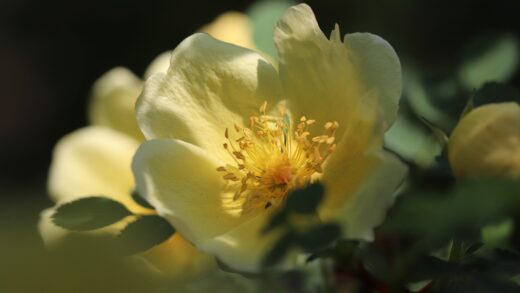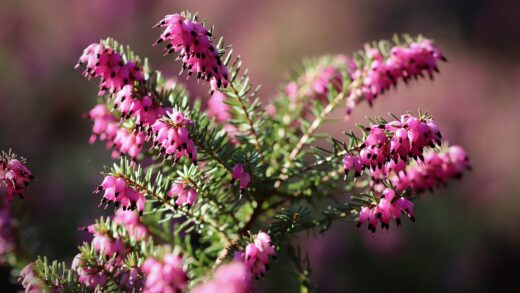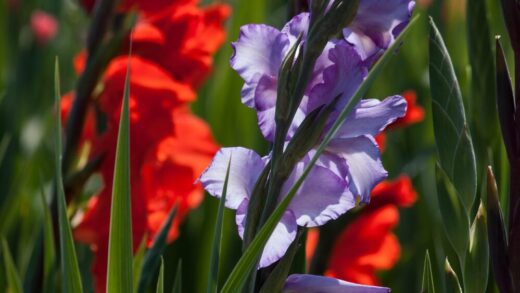The single most critical factor in the successful cultivation of French lavender is the provision of abundant and direct sunlight. This plant is a quintessential sun-worshipper, having evolved on the exposed, sun-drenched hillsides of the Mediterranean. Its entire physiology, from its silvery, light-reflecting foliage to its prolific blooming habit, is adapted to an environment of high light intensity. Failing to meet this fundamental requirement is the most common reason, after overwatering, that French lavender fails to thrive in a garden setting, resulting in a plant that is weak, leggy, and devoid of its characteristic floral display.
To flourish, French lavender requires a minimum of six hours of direct, uninterrupted sunlight each day. However, for the most vigorous growth, densest form, and most abundant flowering, eight or more hours of full sun is the ideal. A location with a southerly or westerly aspect is typically the best choice, as these spots receive the most intense sunlight throughout the day. When considering a planting location, it is important to observe the path of the sun throughout the day and account for any shadows cast by buildings, trees, or other structures.
The benefits of full sun exposure extend beyond just promoting flowering. Intense sunlight helps to keep the foliage and the crown of the plant dry, which is crucial in preventing the onset of fungal diseases to which this species can be susceptible. It also concentrates the aromatic essential oils in the leaves and flowers, making the plant more fragrant. A plant grown in adequate light will be naturally more robust, with strong stems and a compact, mounding habit that is both aesthetically pleasing and structurally sound.
In essence, there is no substitute for sunlight when it comes to French lavender. While the plant may technically survive in a location with less light, it will never achieve its full potential. It will stretch and reach for the light, a condition known as etiolation, resulting in sparse foliage and long, weak stems that are unable to support the weight of the flowers. For gardeners with shady plots, it is far better to choose a different, shade-tolerant plant than to attempt to grow French lavender in unsuitable conditions.
The critical role of sunlight for french lavender
Sunlight is the primary source of energy for all plants, and for a high-energy plant like French lavender, its role is absolutely paramount. Through the process of photosynthesis, the plant converts light energy into the chemical energy it needs to fuel all of its life processes, from producing leaves and stems to flowering and developing a strong root system. Insufficient light directly translates to insufficient energy, leading to a plant that is merely surviving rather than thriving. This energy deficit is the root cause of the poor growth seen in shaded lavender plants.
The intensity of the sunlight is also a key factor. French lavender is adapted to the high-intensity UV light of its native Mediterranean climate. This is reflected in its silvery-grey foliage, which contains fine hairs and a waxy coating that help to protect the leaves from scorching and reduce water loss. This adaptation means the plant can, and in fact demands, to be placed in the most intense sun your garden has to offer without fear of burning the leaves.
Sunlight also plays a direct role in regulating the plant’s growth habit. In full sun, the plant receives light signals from all directions, which encourages it to grow in a dense, symmetrical, and compact mound. When light is limited or comes from only one direction, the plant will divert its resources into elongating its stems to grow towards the light source. This results in the undesirable leggy appearance, with long, bare stems and sparse foliage at the base.
Furthermore, the initiation of flower bud formation in French lavender is strongly triggered by a combination of day length and high light intensity. Even if all other conditions, such as soil and water, are perfect, a plant situated in a shady spot will produce few, if any, flowers. The energy required to create its elaborate and numerous blooms is substantial, and this energy can only be generated through many hours of direct sun exposure.
Identifying the ideal sun exposure
The ideal sun exposure for French lavender is what horticulturists refer to as “full sun.” This is technically defined as a location that receives six or more hours of direct, unobstructed sunlight per day. However, for this particular species, the more sun, the better. A spot that is sun-drenched from mid-morning through the late afternoon is the absolute gold standard. This ensures the plant has ample opportunity to photosynthesize and that any moisture from morning dew or rain is quickly evaporated from its leaves.
When scouting for the perfect location, a south-facing aspect is generally the best in the Northern Hemisphere, as it provides the most prolonged and intense sun exposure throughout the day. A west-facing location, which receives strong afternoon sun, is the next best choice. An east-facing spot, which receives only the less intense morning sun, may be adequate if it is completely unobstructed, but it is not ideal. A north-facing location should be avoided entirely, as it will be too shady.
It is important to consider not just the current sun exposure but also how it might change throughout the seasons and over the years. A spot that is sunny in the spring might become shaded in the summer when deciduous trees nearby have fully leafed out. Similarly, a small tree or shrub planted nearby could grow over the years to eventually cast a shadow over your lavender bed. Thinking ahead when selecting a site will prevent the need to transplant your lavender in the future.
For gardeners with limited sunny space, container growing can be an excellent solution. A potted French lavender can be moved around a patio or balcony to follow the sun throughout the day. It also allows you to place the plant in the sunniest possible spot, such as on a hot driveway or a south-facing deck, where an in-ground planting might not be feasible. This flexibility makes it possible to provide the ideal light conditions even in a garden with significant shade.
Consequences of insufficient light
The consequences of providing French lavender with insufficient light are predictable and detrimental to the plant’s health and appearance. The most immediate and noticeable effect is a significant reduction or complete absence of flowering. A plant grown in partial shade may produce a few small, lackluster blooms, but it will never achieve the stunning, prolific floral display that is the hallmark of a healthy, sun-grown specimen. This is because the plant simply does not have the energy reserves to invest in reproduction.
Another clear sign of inadequate light is etiolation, or leggy growth. The plant’s stems will become elongated, thin, and weak as they stretch in an attempt to reach a better light source. The spacing between the leaves on the stems, known as the internodes, will also increase, giving the plant a sparse and gangly look rather than a full, bushy one. These weak stems are often unable to support themselves, causing the plant to flop over and have an untidy, open habit.
The foliage of a shade-grown lavender will also differ from that of a plant in full sun. Instead of the characteristic silvery-grey color, the leaves will often be a duller green. This is because the plant produces more chlorophyll in an attempt to capture what little light is available. The plant will also have fewer leaves overall, contributing to its sparse appearance. This weaker, softer foliage is also more susceptible to fungal diseases.
Over time, a French lavender grown in low light conditions will experience a general decline in vigor. It will be more vulnerable to pests and diseases, less tolerant of drought or other environmental stresses, and less likely to survive the winter. The plant’s root system will be less developed, further compromising its ability to take up water and nutrients. In short, while a lack of sun may not kill the plant immediately, it will prevent it from ever being the beautiful, aromatic, and resilient plant it is meant to be.
Adapting to different light conditions
While the ideal of eight-plus hours of sun is clear, some gardeners may have locations that fall slightly short of this standard. If your only available spot receives around six hours of direct sun, you can still attempt to grow French lavender, but you must be prepared to provide exemplary care in all other aspects to compensate. This means ensuring the soil drainage is absolutely perfect and being very disciplined with your watering and pruning to encourage the densest possible growth.
In climates with extremely hot and intense summer sun, such as in desert regions, French lavender can sometimes benefit from a small amount of shade during the hottest part of the afternoon. This can help to reduce heat stress on the plant. However, this is the exception rather than the rule. For the vast majority of climates, the plant will thrive in as much direct sun as you can provide. If you notice the foliage scorching or wilting excessively despite adequate soil moisture, a location with morning sun and light afternoon shade might be a viable alternative.
For indoor cultivation, which is sometimes attempted in very cold climates, providing adequate light is the biggest challenge. A sunny, south-facing window is the minimum requirement, but even this is often not enough to prevent the plant from becoming leggy. To successfully grow French lavender indoors, you will almost certainly need to supplement the natural light with a high-quality, full-spectrum grow light. The light should be positioned just a few inches above the plant and kept on for 12 to 14 hours per day to mimic the long, sunny days the plant craves.
Ultimately, the best way to adapt is to be realistic and choose your battles. If your garden is predominantly shady, it is better to embrace that condition and choose from the wide array of beautiful plants that thrive in low light. Forcing a sun-loving plant like French lavender into a shady spot will only lead to a constant struggle and a disappointing result. By respecting the plant’s fundamental need for light, you set yourself, and the plant, up for success.

















